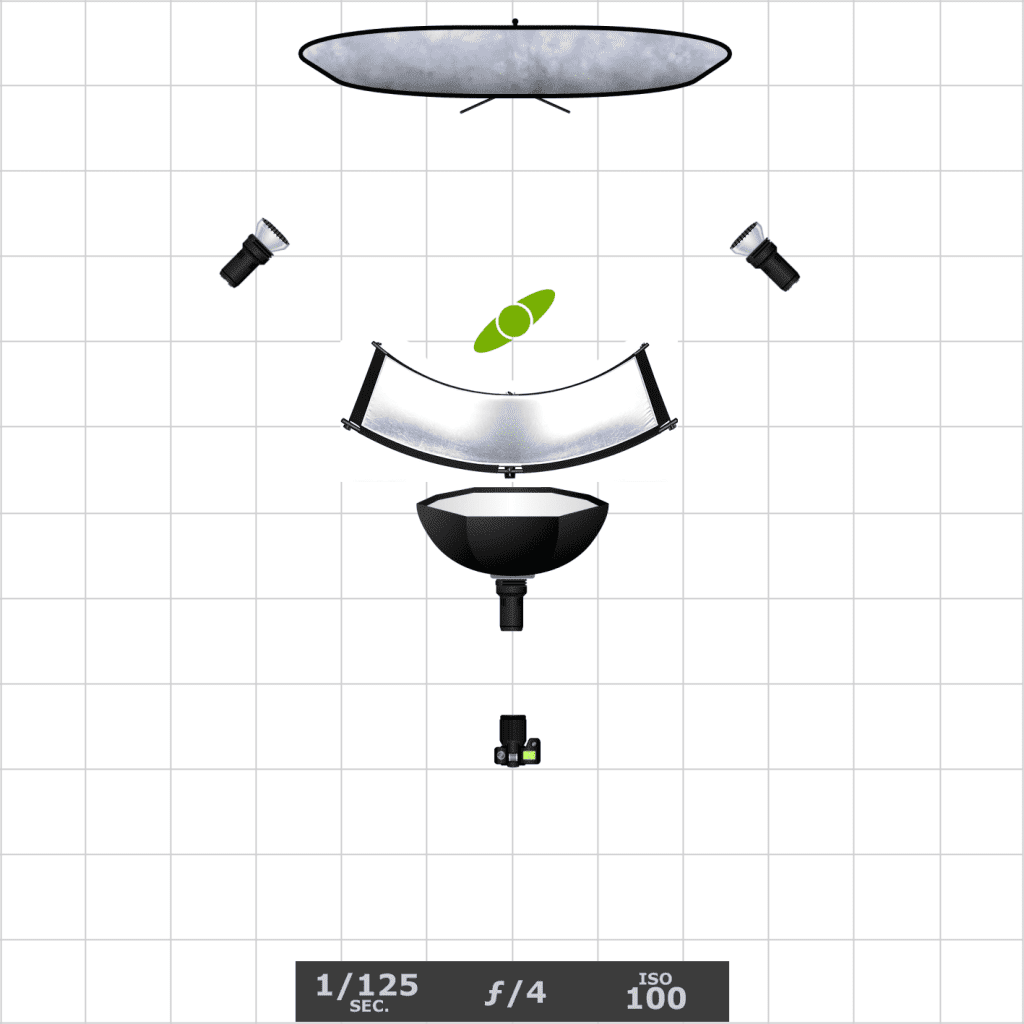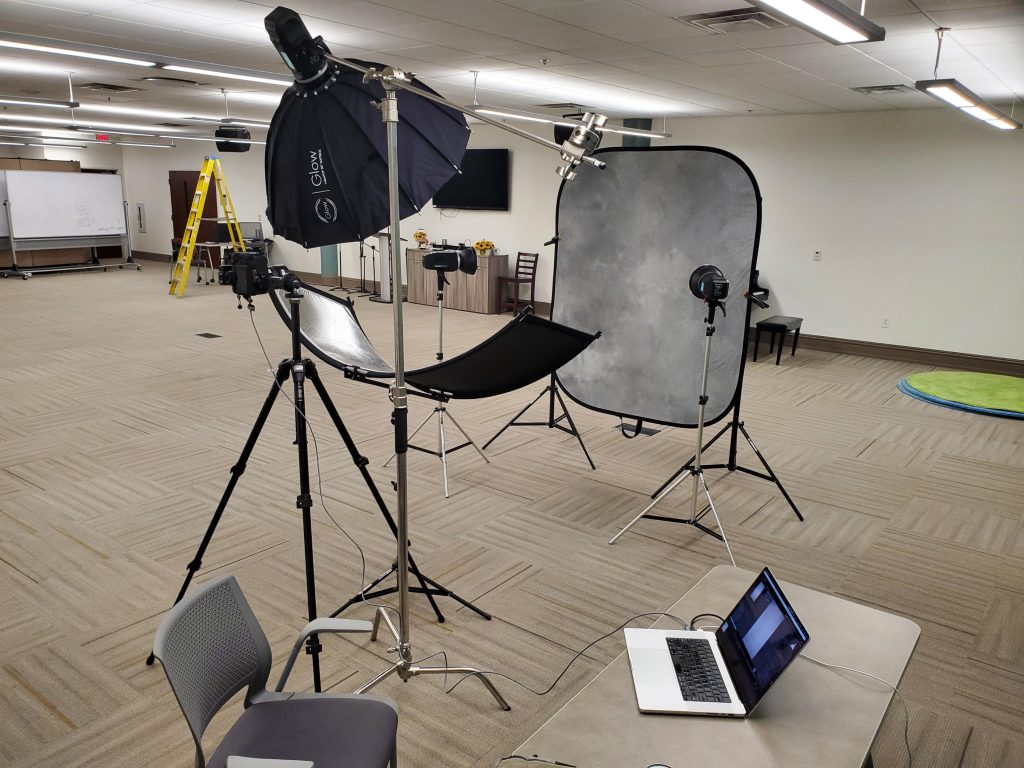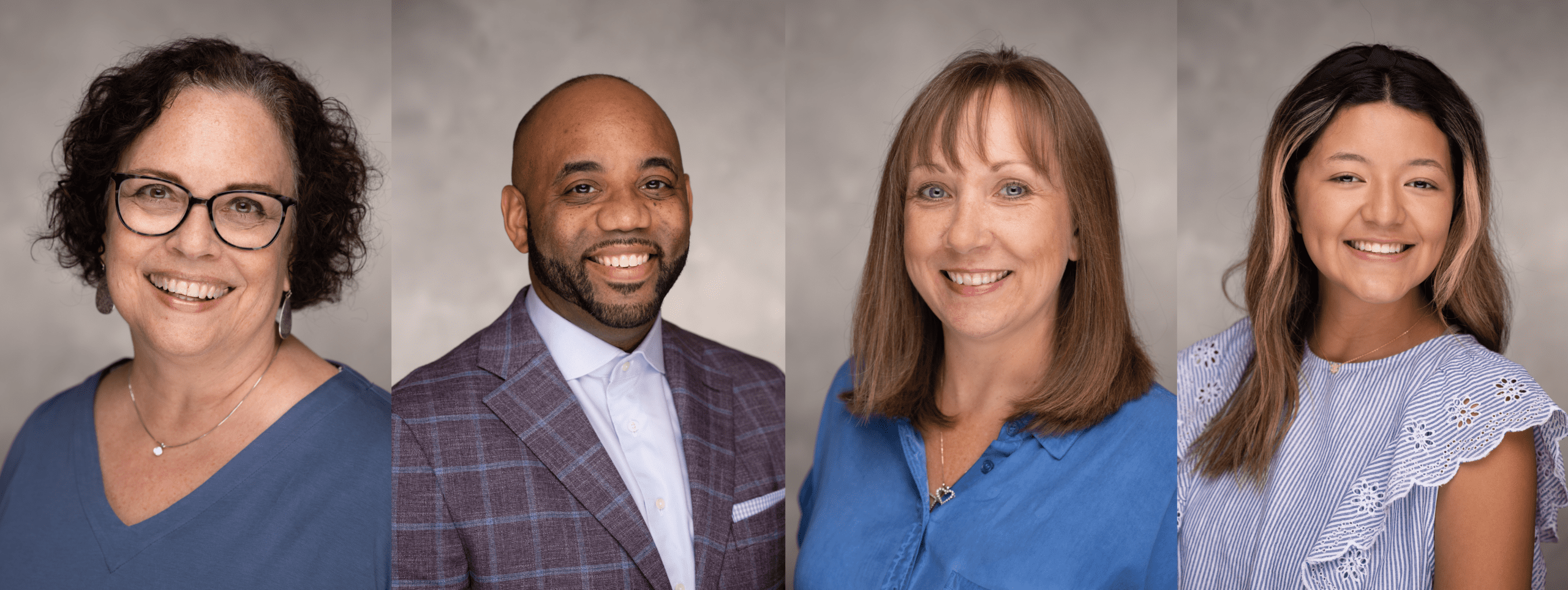As a photographer with over forty years of experience, I recognize the power of lighting setups in creating stunning portraits. In my recent venture into headshot photography, I’ve found the clamshell lighting technique invaluable. But what exactly is clamshell lighting, and why did I choose it for my headshot sessions?

The Clamshell Lighting Setup
Clamshell lighting is a sophisticated technique that involves positioning two lights in a manner that resembles an open clamshell, hence the name. The primary goal of this setup is to create soft, flattering light that minimizes shadows and highlights the subject’s features while maintaining even lighting across their face.
Typically, one light is placed directly before the subject, acting as the “main” light. This light is often equipped with a softbox or diffuser to ensure the light falls gently on the subject’s face, reducing harsh shadows. The second light is positioned under the person’s face, acting as a “fill” light. This light helps to fill in the shadows created by the leading light, resulting in a well-balanced and flattering look. As you can see in the setup, I used a reflector for this light.

A Twist on Clamshell Lighting: The Background Game Changer
In a recent endeavor, I stumbled upon a variation of the clamshell lighting technique that has completely transformed my headshot sessions. While the traditional clamshell setup focuses on the subject, I realized that a similar approach could work wonders for the background.
To achieve this, I introduced two additional lights aimed at the background. Now, you might wonder why you need extra lights for the background in a headshot session. The answer lies in achieving a uniform background illumination.
Consistency is Key
When working with a single light source for the background, inconsistencies can arise, especially when dealing with subjects of varying heights or positions. As an experienced photographer, I know that even subtle changes in positioning can result in uneven lighting, ultimately affecting the final shot’s quality.
I effectively eliminated this issue by incorporating two lights aimed at the background. Like in copy work, where the objective is to ensure uniformity, this setup guarantees that the background remains evenly lit from top to bottom and left to right. Whether I’m capturing a tall individual or a shorter one, the background maintains uniformity, adding a professional touch to each headshot.
Diverse Choices and Creativity
One of the remarkable aspects of this lighting setup is its versatility. Not only does it provide consistent lighting, but it also offers the creative freedom to experiment with various backgrounds. I prefer white or light grey backgrounds, creating a clean and professional look. By having complete control over the background lighting, I can ensure that the subject remains the focal point while complementing its features with an appropriate background.
Putting the Setup to Work
Recently, I shared this innovative lighting setup on my Facebook page, showcasing my “office of the day” for headshot sessions. Surprisingly, the post garnered interest from fellow photographers and potential clients. Several inquiries poured in, asking about the reasoning behind my choices and the benefits of this setup.
The journey to perfecting my headshot photography has led me to a lighting technique that highlights my subjects’ best features and brings a new level of consistency and professionalism to the background. With clamshell lighting’s ability to adapt to different angles and positions without moving the lights and enhanced background lighting, I’ve found a winning combination that elevates my headshot game.
Conclusion
In the world of photography, lighting can make or break a shot. With its variations and adaptations, the clamshell lighting technique offers a pathway to creating captivating headshots with even illumination across subjects and backgrounds. As my experience evolves, I’m excited to see how this technique will continue to shape my craft. I’m grateful for the opportunity to share it with fellow photography enthusiasts and clients alike.

